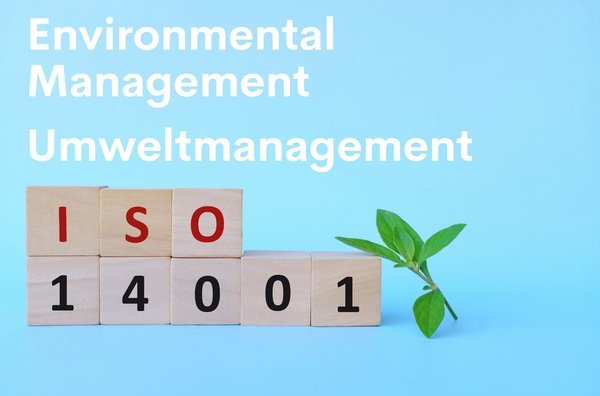Through responsible use of resources and continuous commitment, companies can positively influence the impact of their actions on the environment. An efficient environmental management system helps to achieve this. DIN EN ISO 14001 has established itself as a globally recognised standard for the assessment of such environmental management systems.
A professional and up-to-date environmental management system is geared towards process optimization. Its goal is to reduce environmental impacts and raise employee awareness of the issue. This is accomplished, for example, by making the best and most sustainable use of resources in order to conserve natural resources. Environmental goals, processes, and responsibilities that are clearly defined increase employees' environmental awareness. Coordinated processes ensure that the environmental management system is constantly developed and improved. All environmentally relevant regulations and laws must be recorded, evaluated, and constantly observed to ensure legal compliance.
The DIN EN ISO 14001 certificate validates an environmental management system’s efficiency as well as its legal compliance. It can be awarded to companies of any legal structure, industry or company size. To do so, an independent certification body determines all aspects regarding a continuous improvement of the environmental performance.
The standard defines the environmental management system's structure, implementation, maintenance, and ongoing optimisation. As a result, certification necessitates that the environmental management system be written down, communicated to employees, and integrated into the organisation. A list of legal obligations is also required, as is the definition of the required representatives.
Environmental impacts throughout the entire product life cycle must be taken into account when defining relevant environmental aspects and operational planning - within the scope of the company's knowledge and influence. This means, for example, that in addition to production, factors such as raw material extraction, transportation, use and disposal are also included. The requirements of internal and external stakeholders such as authorities, suppliers, customers and employees also play a role.
The certification process
The DIN EN ISO 14001 certification procedure consists of several steps. An optional pre-audit can be useful to identify possible deficiencies in the documentation or implementation of the environmental management system.

The actual certification procedure is divided into two stages. The first aims to determine the certification capability of the company or organisation. As a result, among other things, the documentation is reviewed for completeness and compliance with the standard's requirements. The environmental management system's implementation status is also checked.
The second stage focuses on the effectiveness of the management system. It comprises the evaluation of every department and every process step, considering general as well as sector-specific laws and standards. In case of deviations, corrective actions are defined.
If all requirements are met, an independent certification body certifies the environmental management system in accordance with DIN EN ISO 14001 for a three-year period. The system's effectiveness and future development are regularly assessed during annual monitoring audits. A new certificate with a three-year validity is issued following a positive re-certification audit performed prior to the expiry of the validity.
Environmental management at monta
At monta, we have long recognised the significance of sustainability and environmental awareness. As a result, these subjects form a fundamental part of our corporate philosophy and guide all of our daily actions. Since 1996, our environmental management system's high standard has been attested to by the DIN EN ISO 14001 certification. The most recent certificate can be found right here. Further information about sustainability at monta can be found here.